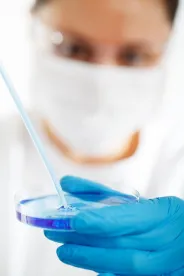The U.S. Environmental Protection Agency (EPA) has recently announced the availability of two proposed test methods and associated testing guidance for evaluating antimicrobial pesticides against two biofilm bacteria, Pseudomonas aeruginosa and Staphylococcus aureus, for comments. EPA states that registrants of antimicrobial products with public health claims are “required to submit efficacy data to EPA in support of the product’s registration” under the Federal Insecticide, Fungicide, and Rodenticide Act (FIFRA). EPA is soliciting comments on the clarity of the standard operating procedures and the regulatory guidance. The two test methods are:
The Draft Guidance to Assess the Efficacy of Antimicrobial Pesticide Products Intended to Control Public Health Biofilms on Hard, Non-Porous Surfaces describes biofilms and their public health significance; the two test procedures for developing efficacy data supporting biofilm claims; products that may be eligible for biofilm claims; test criteria; data submission procedures for efficacy data; and labeling guidance.
The draft guidance states that the term biofilm “is reserved for claims against biofilm that contain specific bacteria that are directly or indirectly infectious or pathogenic to humans,” and “biofilm claims are considered to be public health claims for which the agency must review and approve appropriate efficacy data.” EPA states: “Examples of use sites that may be supported by the biofilm test methodologies herein, and found acceptable, include restrooms, shower stalls, sink basins or drains (excluding the drain pipe) and nearby hard, non-porous surfaces of walls, countertops, and instrument trays in patient care areas of hospitals. In contrast, claims against non-public health slimicides must also be supported by appropriate efficacy data, however, submission of the data is only required when requested by the EPA.”
The Draft Guidance also sets forth examples of acceptable label claims against public health biofilms and acceptable non-public health claims. The examples of acceptable label claims against public health biofilms are:
-
Kills 99.9999% of bacteria* in biofilm on a hard, non-porous surface;
-
Kills a minimum of 99.9999% of bacteria* in biofilm;
-
Reduces at least 99.9999% of bacteria* growing in biofilm;
-
Formulated to kill 99.9999% of bacteria* in biofilm;
-
Other related claims:
-
Kills biofilm bacteria*; and
-
Penetrates biofilm, killing the bacteria* living there.
*[List of bacteria “tested as a biofilm”; at a minimum, Pseudomonas aeruginosa and Staphylococcus aureus].
Examples of acceptable non-public health claims supported by appropriate efficacy data include:
-
Slimicide;
-
Cleans away microorganism slime/grunge;
-
Maintains control of slime; and
-
Controls slime-forming microorganisms.
Comments will be accepted until December 5, 2016.




 />i
/>i
